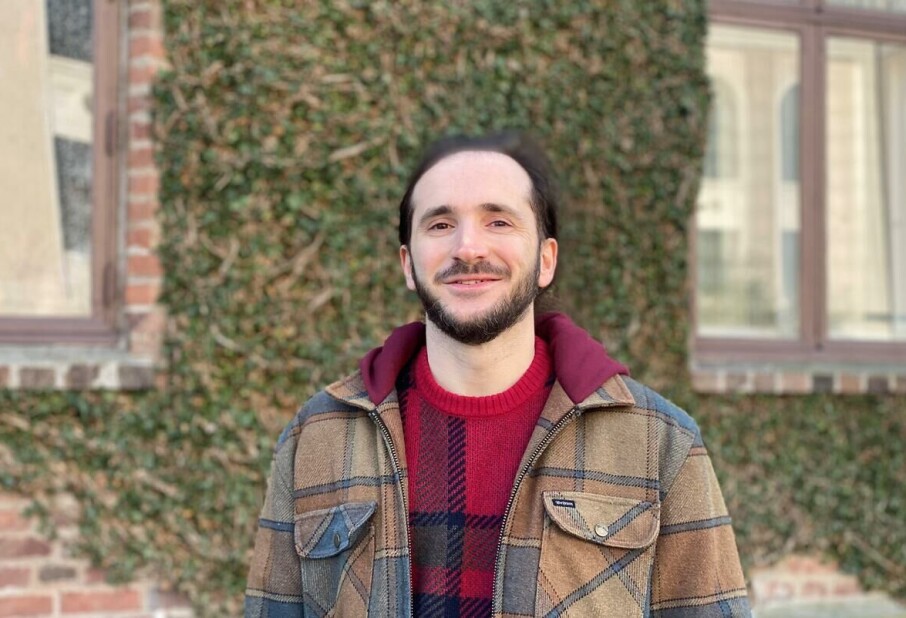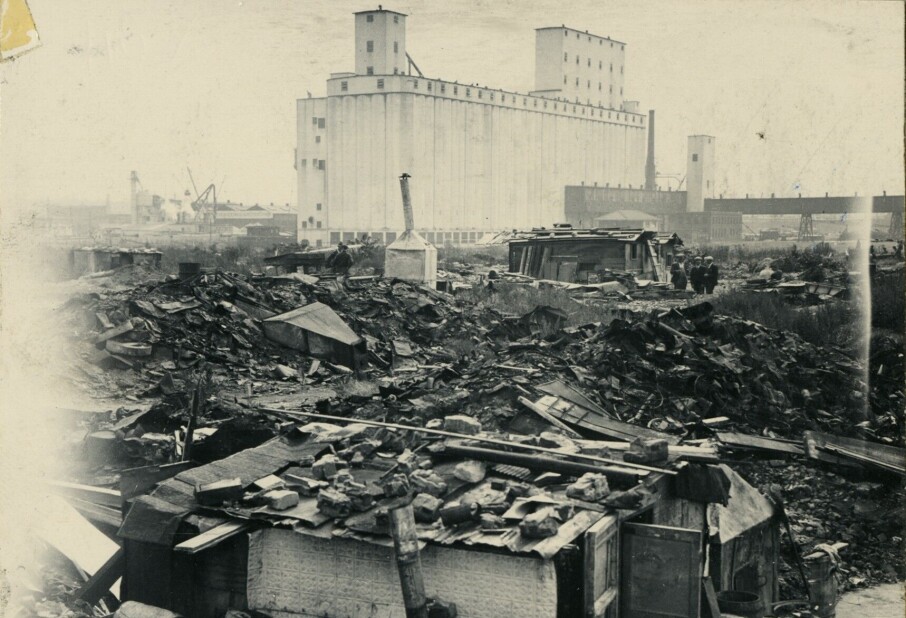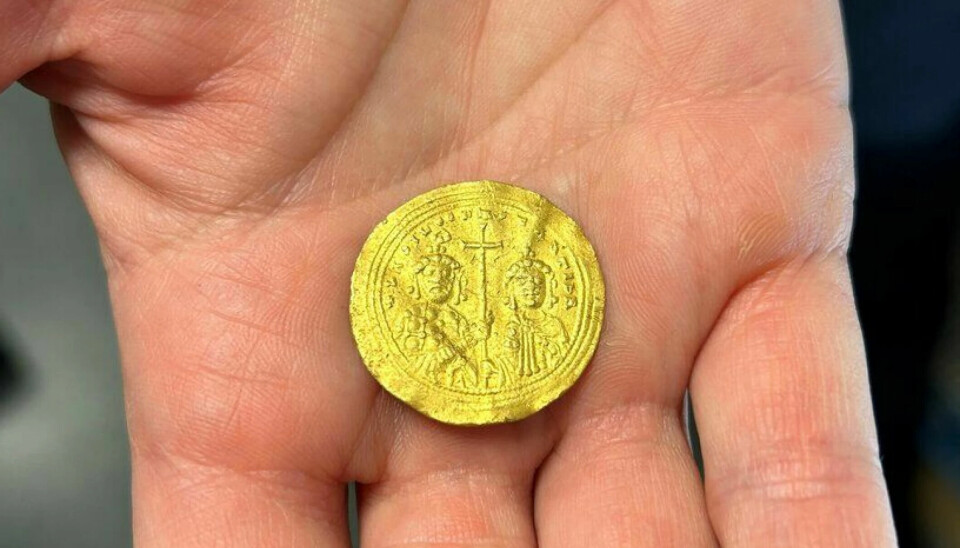
Unique coin found in central Norway: How did this 1,000-year-old Byzantine gold coin end up in the Norwegian mountains?
Could it have been part of the great treasure that Harald Hardrada brought home from Constantinople? A metal detectorist brought the gold coin to light this autumn after it had spent a thousand years in the mountains of Valdres.
“It’s difficult to brag about finds so much because it sounds absolutely incredible. But that's what it is,” says May-Tove Smiseth, the county archaeologist for Innlandet County in Eastern Norway.
Even she did not believe the metal detectorist who contacted her to report that he had found a gold coin up in the mountains in Vestre Slidre in the Valdres region.
“ That he found a gold coin on a random trip in the mountains is completely surreal,” she says.
“This is unusual and exceptional. From what we’ve found out, the coin is the only one of its kind in Norway.”
And it was true. It was a gold coin, originating from what we now refer to as Istanbul, Turkey, which was known as Constantinople at that time.
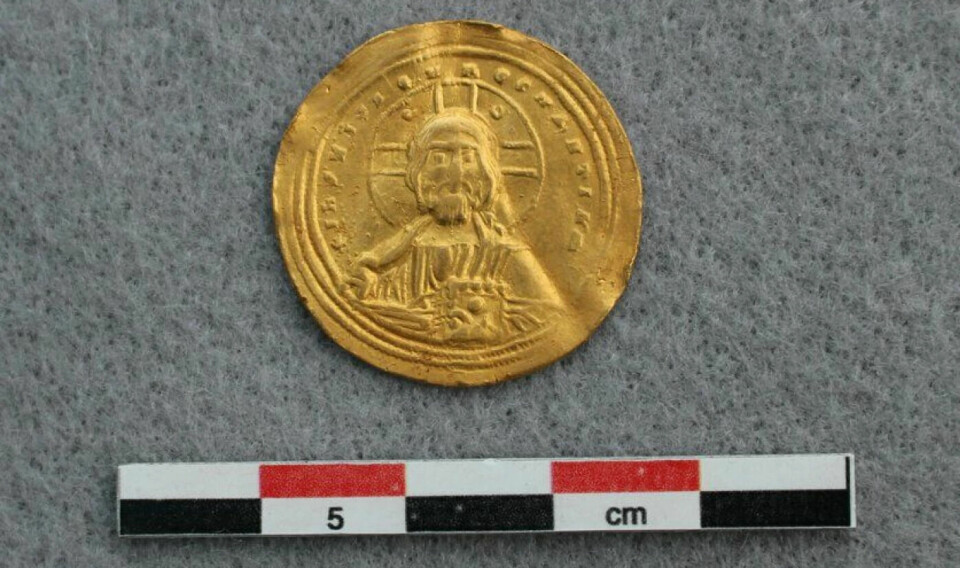
Christ and the emperors
The coin is a Byzantine histamenon nomisma. These were introduced in Byzantium around 960 AD in what was then the eastern part of the Roman Empire.
One side of the coin is stamped with an image of Christ holding the Bible. On the other side, the two emperors Basil II and Constantine VIII are most likely depicted. The two brothers jointly ruled in Byzantium for almost 50 years, from 976-1025.
Presumably, the coin was minted early in the 11th century. The exact date is difficult to determine, but the dotted border suggests that it was late in Basil’s and Constantine’s reign, Smiseth explains.
The coin also bears two inscriptions. In Latin, it says Jesus Christ, King of those who rule, and in Greek, it reads Basil and Constantine, emperors of the Romans.

The treasure of Harald Hardrada
In some way or another, the coin found its way to Valdres in Norway.
Perhaps it was originally part of the treasures that Harald Hardrada amassed after serving in the Varangian Guard for the Byzantine emperor in 1034? The Varangian Guard consisted of Scandinavian mercenaries who served as bodyguards and were known as being fearless and strong.
In a press release, Innlandet County writes that it was customary at that time for the guards to loot the palace when an emperor died, and during Harald's time in Byzantium, three emperors had died.
The treasures Harald collected were partly used as a dowry so that he could marry Ellisiv, one of the daughters of Prince Jaroslav of Kyiv. You can read more about them in this article: The Princess from Kyiv was Norway's last Viking queen.
Incidentally, Basil II, who is depicted on the coin, was Ellisiv's great-uncle.
The sagas also tell us that Harald and his men returned home to Norway with immense wealth in 1046, with ships laden with gold and other valuables.
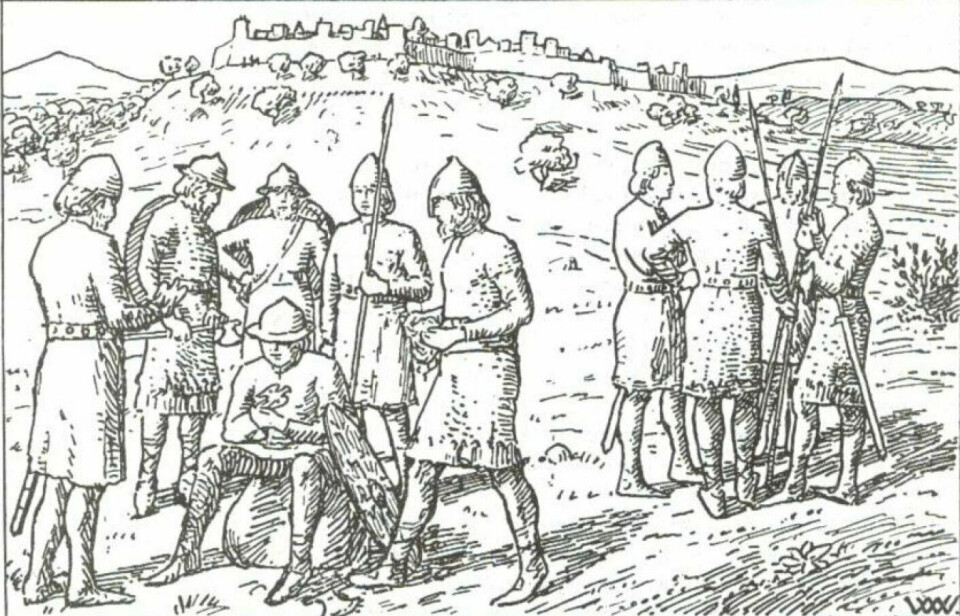
From a ship loaded with gold to the mountain wilderness
The whole thing sounds incredible.
“But it’s not unrealistic to suggest that this is where the coin originates from,” Smiseth says.
She points to a study on Byzantine coins in the Nordic region, which states that three Byzantine gold coins have been found in Sweden, none in Denmark, while 15 have been found in Norway – most of them from various treasure finds made in the 19th century. This includes the recent find in Valdres.
“It’s reasonable to believe that this coin could be from the treasures that Harald Hardrada brought with him. He received a lot of gold in payment from the three emperors in Byzantium who ruled while he was there,” Smiseth says.
“Harald acquired a lot of power by using the gold he returned with to build alliances.”
Over the mountains in Valdres, trade routes connected the east and west. Perhaps a merchant traveller had the bad luck to lose the splendid gold coin on such a trading trip.
We might learn more about this next year because the discovery was made so late in autumn this year, and the ground had already frozen. The discovery site will, therefore, be examined more closely in the spring.
Not just any old object
Svein Harald Gullbekk is a professor at the Museum of Cultural History in Oslo and his expertise includes coins. He confirms that although occasionally found, the Byzantine coin is a rare find in Norway.
“The coin is also a really interesting find, and the reason for that is that it’s not just any old object,” Gullbekk says.
“We can date it, we know where it comes from, we can place it in Norwegian history with a fairly accurate dating background. So it’s a very special and splendid find.”
Gullbekk also talks about Harald Hardrada and the Scandinavian warriors who served the emperors in Byzantium.
“The coin doesn’t look like it has been in circulation for that many years, so it might be a stretch to think that it came with Harald when he returned home,” he says.
“Harald wasn’t the only Scandinavian who was down there and came home. But he is the one mentioned in written sources from the same time period.”
Most finds in the country
Smiseth oversees all discoveries made with metal detectors in Innlandet, which is the Norwegian county that contributes the highest number of such finds annually to the Museum of Cultural History.
Between 1,000 and 1,500 finds are submitted to Smiseth each year.
“We’re notified daily of discoveries during spring, summer, and autumn,” Smiseth says.
Earlier this year, someone found a rare gold bracteate dated to the migration period in Norway, 400-570 AD. Bracteates were imitations of Roman medallions that were used as jewellery.
Detectorists have also found many conical brooches, a type of costume jewellery used between 550 and 650 AD.
“We thought this was a rare find, until the metal detectorists found so many of them,” Smiseth says.
She has experienced an increase in the number of findings submitted since 2017, peaking during the Covid-19 pandemic in 2020 when nearly 2,000 finds were submitted.
The finds are recorded and forwarded to the Museum of Cultural History in Oslo.
———
Translated by Ingrid P. Nuse
Read the Norwegian version of this article on forskning.no




























